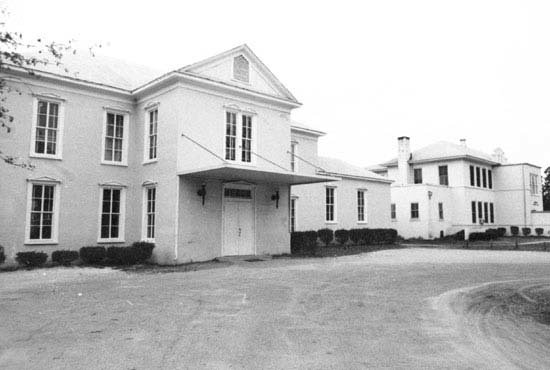The History of Batesburg-Leesville
The now-unified towns of Batesburg and Leesville are situated on a sandy elevation known as the “Ridge” that separates the Saluda and Edisto River basins.
Leesville owes its name to the Lee family who settled in the area and especially to John W. Lee, who operated a tavern and inn in what is now Leesville in the late 18th and early 19th centuries.
Batesburg was named after the Bates family who settled in what is now Batesburg.
Although a small community named Leesville existed before the Civil War, the towns of Batesburg and Leesville trace their existence to the creation of the Columbia to Augusta Railroad in the late 1860s. Both towns grew due to railroad traffic, with Leesville incorporating in 1875 and Batesburg following suit in 1877.
Despite the fact that they were not that far from each other, the towns developed separate identities.
Leesville was settled by those of Germanic heritage, with the Lutheran faith predominating, while Batesburg was more English, with the Baptist faith predominating. Leesville was more connected with the town of Lexington, while Batesburg looked more toward Edgefield and Augusta.
The towns grew in importance throughout the late 19th century, boasting more businesses than Lexington by the early-1880s. Leesville became home to the only accredited college in Lexington County in 1881 when the Leesville English and Classical Institute was established. It was renamed Leesville College in 1890.
The towns also got a boost when the Lutheran Synod established Summerland College, a college for women, in between the towns in 1912. Like many towns in the South in the late-19th and early-20th centuries, Batesburg was home to a cotton mill. Beginning as the Batesburg Cotton Mill, the mill and the associated mill village were established in 1895. The mill was later purchased by the Martel Corporation.
As the 20th century progressed, the towns began to inch closer to consolidation. In 1926, a consolidated high school was constructed, and a joint chamber of commerce was formed in 1946. Batesburg made national headlines in 1946 when a returning Black Army veteran, Isaac Woodard, was pulled off a Greyhound bus and beaten by local police officers, including the chief of police. The beating resulted in Woodard losing his eyesight. The chief of police was indicted but was found innocent by an all-white jury. The beating led President Harry S. Truman to desegregate the military.
The towns of Batesburg and Leesville finally merged into a single municipality in 1992. Batesburg-Leesville still retains many of the historic houses that were constructed in the late 19th and early 20th centuries along with its two downtown historic districts.
In addition to the town’s historic charm, many Midlands residents are probably most familiar with Shealy’s BBQ, which was established in 1969.
J.R. Fennell has served as director of the Lexington County Museum since 2007. He holds a masters degree in public history and a certificate of museum management from the University of South Carolina.
Keywords
batesburg-leesville history, lexington county museum, jr fennell, sc midlands through the yearsOther items that may interest you










Comments
No comments on this item Please log in to comment by clicking here